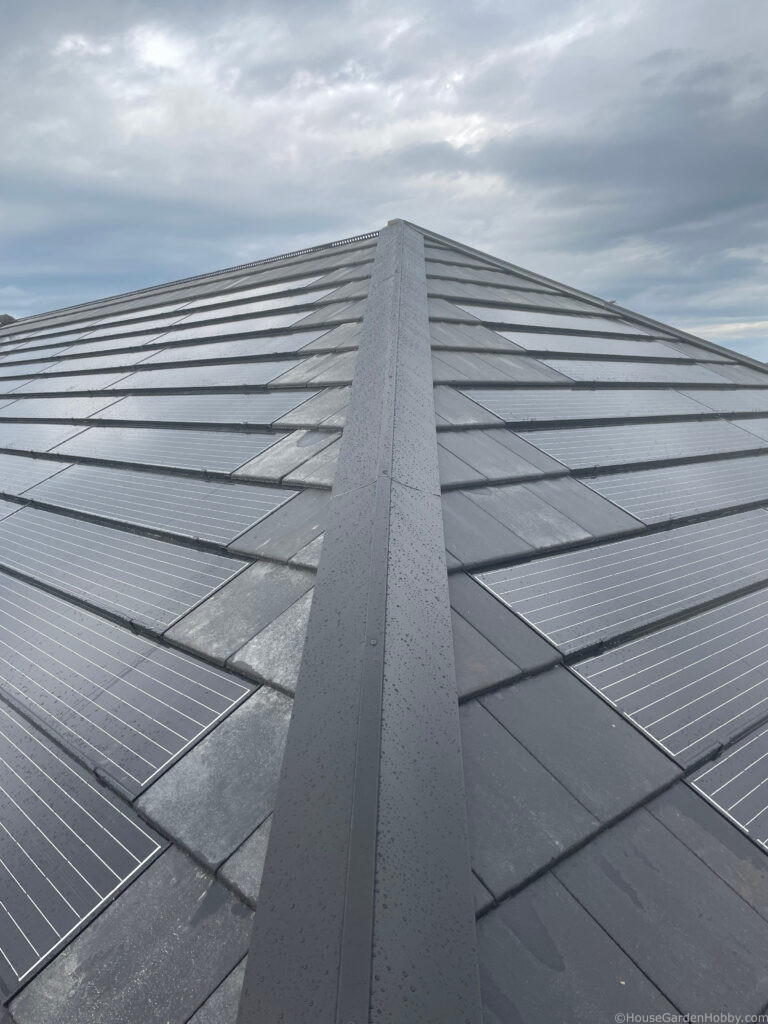
I often get asked whether it’s worth investing in solar panels or if I make money from them. The answer might not be as straightforward as one would hope, but it’s important to consider that there are many investments that yield a worse return. The extent of the savings over the system’s lifetime will likely be influenced by energy policies in the coming years.
Electricity Costs
The savings from solar panels are highly dependent on your consumption patterns. If you can shift your electricity usage to times when you are actually producing the electricity yourself, you can save a significant amount.
The cost here is based on Norwegian Kroner (NOK) or aslo known as kr. 11,37 NOK is equivelant to 1 USD.
Currently, you can sell a kWh at the spot price (excluding VAT) plus 5 øre (0.4 cent) in grid rent. On the other hand, a purchased kWh consists of the spot price (including VAT) plus 1.25 øre (0.1 cent) to the energy fund, 38.71 øre (3,4cent) energy component (day), and 20.55 øre (1,8cent) consumption tax.
For example, if you sell a kWh for 1 kr (8,8 cent) including grid rent, you have to pay 1.78 kr (16 cents) if you had to buy it instead. This difference highlights the potential savings if you can maximize your self-consumption.
Own Consumption
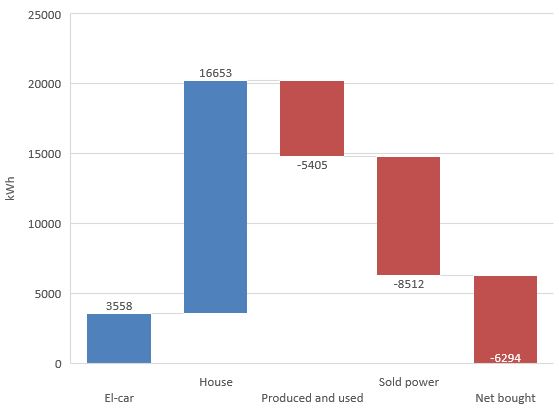
In the overview above, consumption is shown in blue, where electric cars account for about 18% and the house for the rest. Of the total consumption, we produced and simultaneously used about 27%.
Ideally, we should have used a larger share of what we produced, but this requires shifting some of the consumption. This is especially relevant in the summer when production is at its peak.
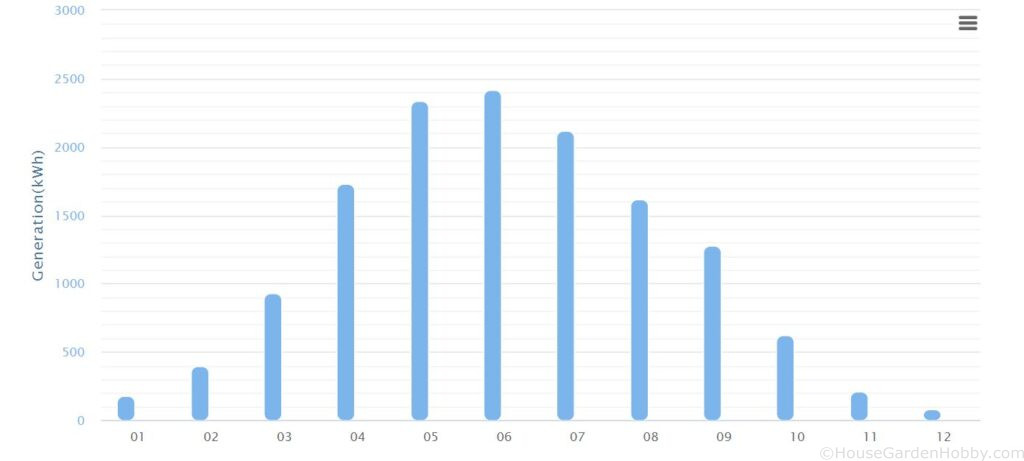
The graph above shows the difference in production between the months. Production is more than 10 times greater in June than in January.
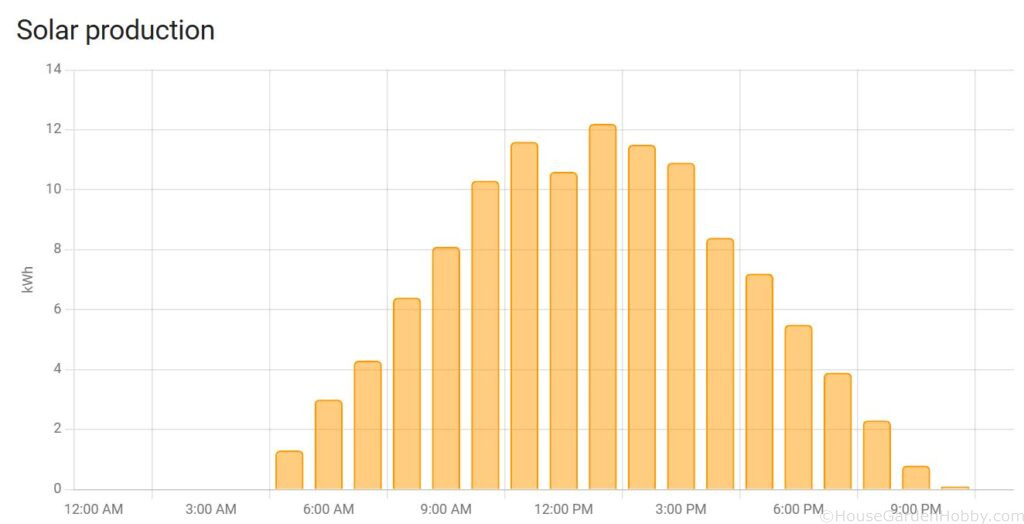
The graph above shows electricity production on June 24, 2024. This is one of the best days in 2024, with production reaching 118.4 kWh.
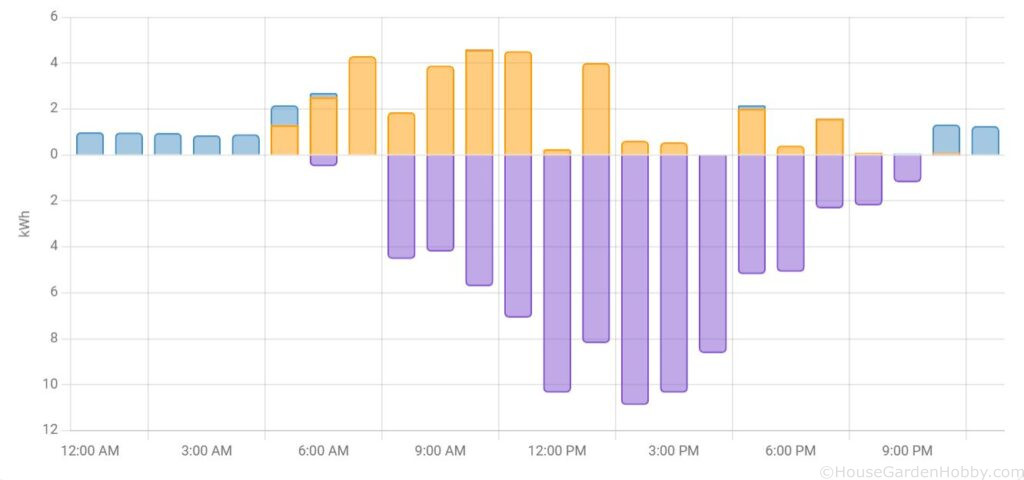
The graph above illustrates what happens to the electricity produced. The blue represents purchased electricity, orange represents consumed self-produced electricity, and purple represents sold electricity.
To reduce purchased electricity and better utilize our own production, activities such as charging electric cars, running the dishwasher, washing machine, and dryer should be moved to daytime. Additionally, the production of hot water can also be shifted more to daytime.
I use Elhub to find consumtion data and Home Assistant to track the production
Profitability
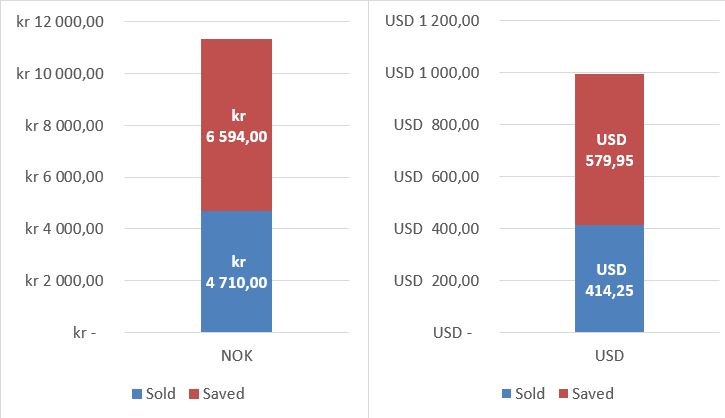
Is it profitable? In total, in 2024, we sold electricity for 4,710 kr (USD 414), while we saved 6,594 kr (USD 580). This amounts to a total of 11,304 kr (USD 994). Compared to the investment, the savings do not cover the financial costs as of 2024, but who knows what the future will bring…
Conclusion
Investing in solar panels is a long-term commitment that can offer significant savings and environmental benefits. While the immediate financial returns might not cover the initial investment costs, the potential for future savings and the positive impact on the environment make it a worthwhile consideration. As energy policies evolve and technology advances, the profitability of solar panels is likely to improve.
Want to Read More About Solar Panels?
Check out this article for more information on installation of the solar panels and their facts.